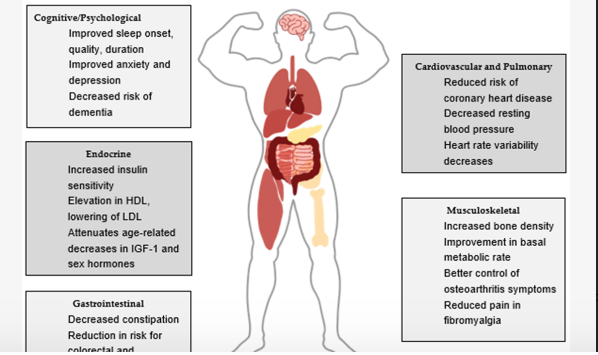Chronic elbow pain is a common ailment that can significantly impact an individual’s quality of life. Whether due to sports injuries, repetitive strain, or degenerative conditions, persistent elbow pain can limit mobility and hinder daily activities. For those seeking relief, an elbow specialist offers targeted treatment options that address the underlying causes of discomfort. This article explores the role of an elbow specialist, the various conditions they treat, and the treatment modalities they employ to alleviate chronic elbow pain.
Understanding Chronic Elbow Pain
Chronic elbow pain can stem from various conditions, including tendinitis, bursitis, arthritis, and nerve compression syndromes like cubital tunnel syndrome. According to the American Academy of Orthopaedic Surgeons, conditions like tennis elbow (lateral epicondylitis) and golfer’s elbow (medial epicondylitis) are prevalent among athletes and those engaged in repetitive overhead activities. This pain often manifests as a dull ache, stiffness, or sharp discomfort during movement, and can worsen with overuse or lack of rest. Identifying the root cause of elbow pain is crucial for effective treatment, making the expertise of an elbow specialist invaluable.
The Expertise of an Elbow Specialist
An elbow specialist is a physician with specialized training in diagnosing and treating elbow-related conditions. These specialists may be orthopedic surgeons, sports medicine doctors, or rheumatologists, all with a focus on the musculoskeletal system. Their extensive knowledge allows them to differentiate between various conditions that can cause elbow pain. They utilize advanced diagnostic tools, such as MRI and ultrasound imaging, to assess the elbow’s structure and function, providing a clearer picture of the underlying issues.
Initial Consultation and Diagnosis
The journey to recovery begins with an initial consultation. During this appointment, the elbow specialist will conduct a thorough examination, review the patient’s medical history, and discuss the nature of the pain. They will assess factors such as the location of discomfort, duration of symptoms, and any previous treatments attempted. This comprehensive evaluation is essential for developing a tailored treatment plan. Accurate diagnosis often requires imaging studies, which help reveal conditions like fractures, tendon tears, or signs of arthritis that may not be apparent through physical examination alone.
Non-Surgical Treatment Options
Elbow specialists prioritize conservative treatment options before considering surgery. Non-surgical interventions may include physical therapy, medication, and lifestyle modifications. Physical therapy focuses on strengthening the muscles around the elbow and improving flexibility, which can alleviate pain and prevent further injury. Pain management may involve nonsteroidal anti-inflammatory drugs (NSAIDs) or corticosteroid injections to reduce inflammation. Additionally, specialists may recommend activity modifications or ergonomic adjustments to reduce strain on the elbow during daily tasks.
When Surgery Becomes Necessary
In some cases, conservative treatments may prove ineffective, prompting the need for surgical intervention. An elbow specialist will consider surgery when there is significant structural damage, such as complete tears of tendons or ligaments, or when chronic pain severely impacts the patient’s quality of life. Surgical options can include arthroscopy, tendon repair, or even joint replacement in severe cases. The choice of procedure depends on the specific diagnosis and the patient’s overall health and activity level.
Rehabilitation Post-Surgery
Following any surgical procedure, rehabilitation is a crucial component of the recovery process. The elbow specialist will typically work with a physical therapist to develop a post-operative rehabilitation plan. This plan will focus on gradually restoring range of motion, strengthening the surrounding muscles, and ensuring a safe return to normal activities. Adherence to rehabilitation protocols is essential for optimal recovery and long-term success, as improper rehabilitation can lead to complications or re-injury.
Staying Current with Advances in Treatment
Elbow specialists must stay abreast of the latest advancements in treatment options and techniques. With ongoing research, new therapies such as platelet-rich plasma (PRP) injections and stem cell therapy are being explored for their potential in treating chronic elbow pain. These innovative treatments aim to promote healing by utilizing the body’s natural healing properties, providing patients with additional options for managing their conditions.
The Importance of Patient Education
Education plays a significant role in the treatment of chronic elbow pain. An effective elbow specialist not only treats the condition but also empowers patients with knowledge about their ailments. This includes understanding the anatomy of the elbow, the nature of their specific condition, and the rationale behind recommended treatments. By fostering open communication, specialists can ensure that patients feel comfortable discussing their concerns and participating actively in their recovery journey.
Collaborative Care Approach
Chronic elbow pain often requires a multidisciplinary approach for effective management. An elbow specialist may collaborate with other healthcare providers, including physical therapists, occupational therapists, and pain management specialists, to create a comprehensive treatment plan. This collaborative care ensures that all aspects of the patient’s health are considered, leading to more holistic and effective treatment outcomes.
Conclusion
Chronic elbow pain can be a debilitating condition, but the expertise of an elbow specialist is pivotal in finding relief. Through accurate diagnosis, tailored treatment plans, and ongoing patient education, these specialists play a crucial role in helping individuals regain their mobility and improve their quality of life. As research continues to evolve, the field of elbow treatment will likely see even more innovative solutions, further enhancing the capabilities of elbow specialists in managing chronic elbow pain.












